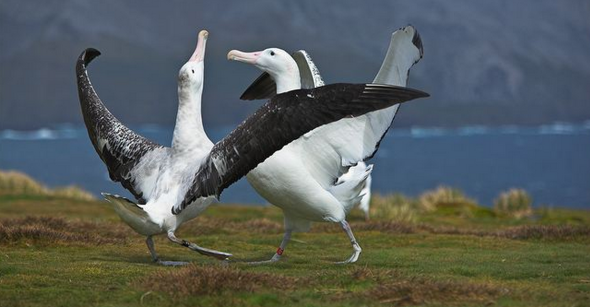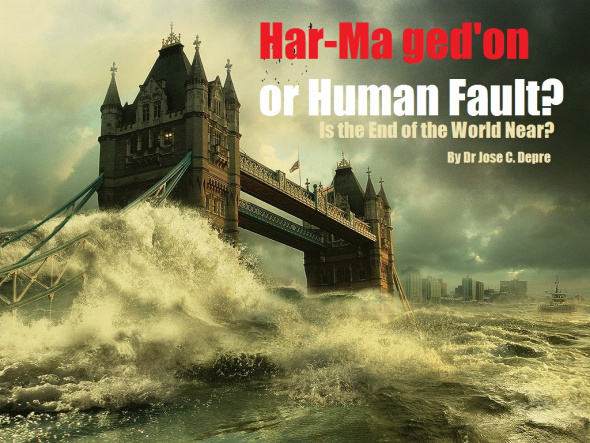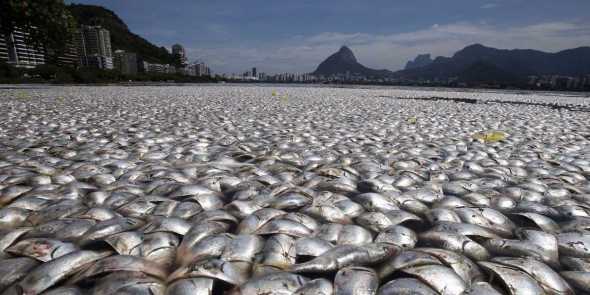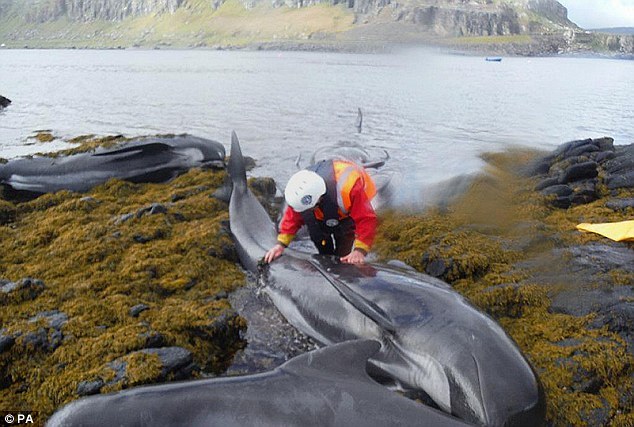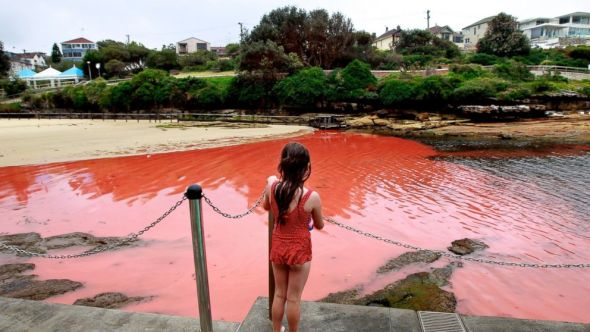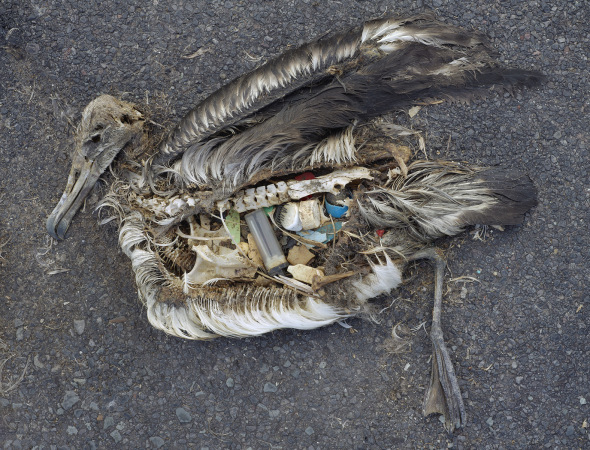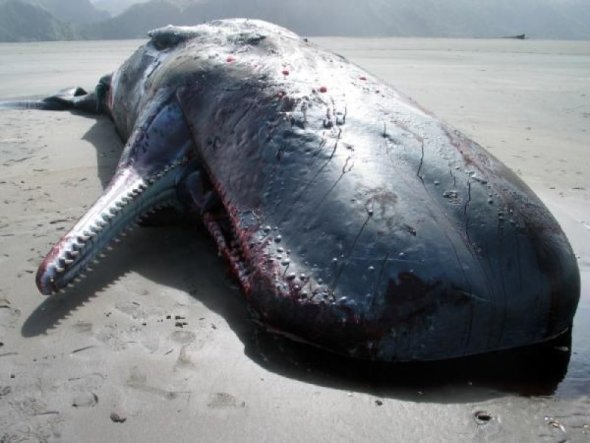MEET THE YOUNG ECO-WARRIORS FROM GRENADA | #OPBEACHCLEAN
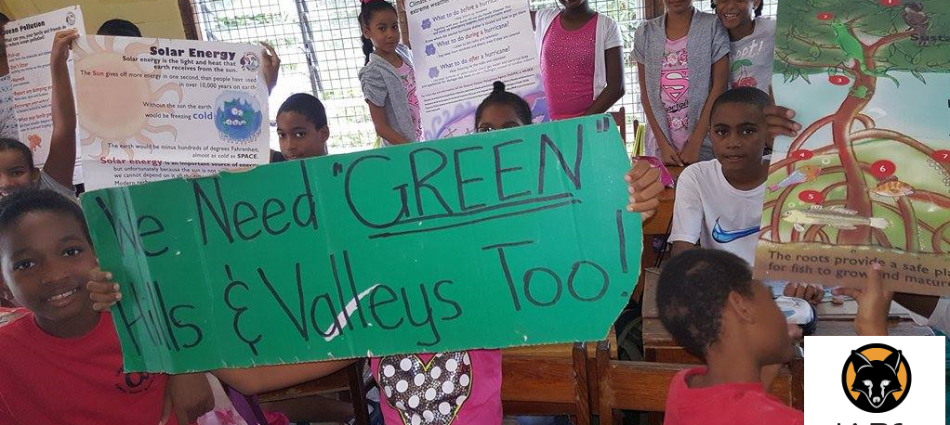

GRENADA ECO WARRIORS, READY FOR OPERATION BEACH CLEAN
GRENADA, West Indies: Meet Grenada’s eco-warriors of the future situated on the small Caribbean West Indies island of Grenada the students of Mt. Parnassus Junior School will be volunteering with their school assistant Mandy pictured below this April 22nd 2017 for the International Earth Day event hosted by I.A.R.F.A. (Image: Mt. Parnassus Junior School Grenada, image copyright.)

Image: Students presenting their mission for Earth Day 2017, Operation Beach Clean.
Operation Beach Clean hosted by myself this April 22nd 2017 has already attracted people from England, Netherlands, Oman, Viet Nam, Thailand, Australia, Greece, and now children from the West Indies island of Grenada which is excellent news.

Image: Teaching assistant and teacher organizing and hosting the youth beach clean.
The Mt. Parnassus Junior School students will be taking part in the two day event cleaning a large stretch of their native islands coastline of which its expected a lot of plastic and waste will be collected due to the islands strategic geographical point.
Students will be collecting waste, monitoring the highest number of individual marine waste items so environmentalists can approach governments and manufacturers to lobby for changes, for the benefit of both animals and our future human generations too. The whole purpose of these events isn’t just to protect wildlife, but to also preserve our children’s future for years to come.
Furthermore the students of Mt. Parnassus Junior School will document on beach cleanliness, types of micro-plastics located on the beaches, pollution, and the deaths of any species of bird and fish found plus much more. For more information please visit our Facebook forum here.
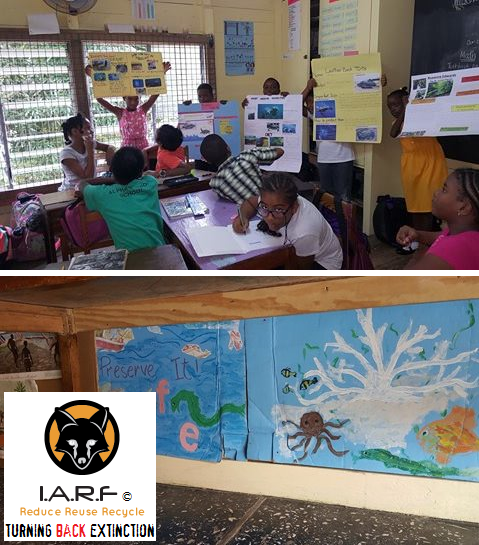
Image: School presentation, Grenada, West indies.
Around 150 bird species are on the island including the Grenada dove – one of the world’s most endangered bird. At the other end of the spectrum is the kite which, in the Caribbean, is widespread. There are a few havens for wildlife in Grenada, including Lake Antoine, Mount Hartman National Park, and the salt pond at the La Sagesse estuary.
To name but a few of the 150 species, birds you might see in Grenada include the limpkin, black-necked stilt, heron, mangrove cuckoo, tern, the common snipe, brown-crested flycatcher, Caribbean coot, northern jacana, three species of hummingbirds, cattle egret, frigatebird, boobies, bananaquit, mockingbird, osprey and the barn owl.
Sea turtles tend to nest at beaches in the north of Grenada, Bathways Beach is a favourite spot from March every year (in the Levera National Park). Giant leatherback turtles, hawksbill turtles, green turtles and, somewhat rarer, loggerhead turtles can be seen in Grenada.
Between the months of December and April in particular sees Grenada’s waters frequented by different whale species, including Orca (Killer) whales, Curvier beaked, humpback and Sperm whales. Around fifteen species in all have been logged which swim in the waters of Grenada. Year-round you can see Pilot, Bryde’s, Sperm, Pygmy and Sei whales. Several different varieties of dolphins can be spotted offshore too.
The large variety of fish in Grenada waters, to name some of them, include the yellow tail snapper, bar jacks, spotted drums, frogfish, scorpion fish, banded jaw fish, pipefish, grey angelfish, horse eye jacks, Atlantic spade fish, grouper, great barracuda, As well as seahorses, stingrays, Moray eels, spotted eagle rays and even Manta rays. For more information please click the link here.
Currently the problems of plastic waste littering the island of Grenada is considered very problematic - and to know these young children will be taking part in such an important international earth day environmental event, and are already eager to make change happen - is fantastic. The youth of Mt. Parnassus Junior School aren’t just setting an example, they are demonstrating their love for their island, flora and fauna - something many adults are still failing to at.
Given the islands’ geological and hydrological conditions, local stakeholders that are working to reduce Grenada’s waste problem expect that most of the plastic bottle litter as well as some of the plastic bottle landfill waste will sooner or later end up in the sea, negatively impacting the islands’ marine ecosystem. Furthermore as I speak nine endemic species of fish and five native birds are already on the verge of complete wild extinction. For more information please view the source here.
I’m so pleased and proud to know that children will be getting involved this April 22nd for the I.A.R.F.A Earth Day Event 2017 - Operation Beach Clean. If you are a school teacher and would like to organize a beach clean to conclude my ten year scientific study on marine and land animal deaths please contact me in person by clicking the link here.
More on the Grenada Beach Clean event will be made public soon. Watch this space.
With much thanks to Mandy, the school children participating, and for everyone that have unselfishly come forward to volunteer their time to clean our oceans on the biggest environmental event of the year.
Thank you.
Dr Jose C. Depre.
Environmental, Botanical and Human Scientist.
WHY IS FLORIDA LOSING SO MANY FISH?
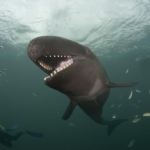

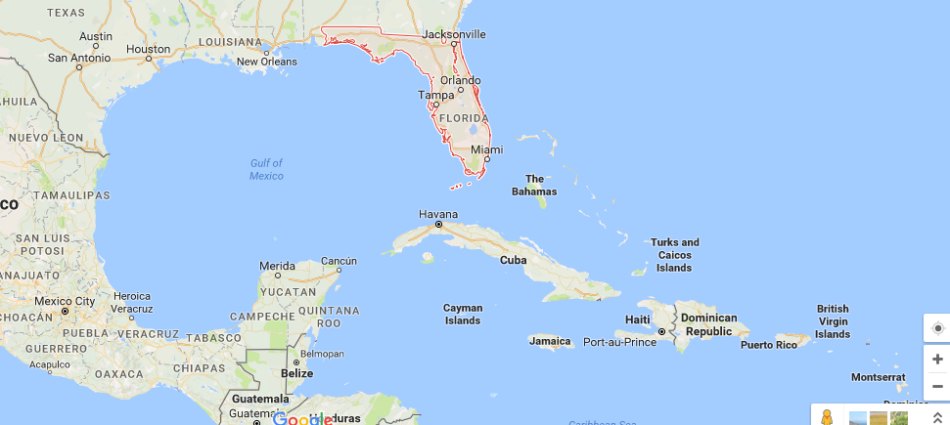
ENDANGERED SPECIES MONDAY | PHOCARCTOS HOOKERI EXTINCTION LOOMING - NATIONAL EMERGENCY.
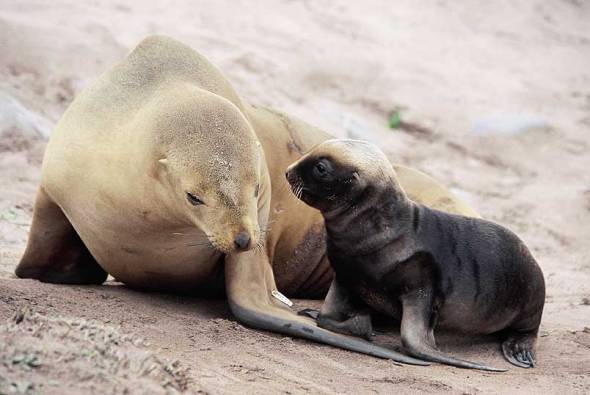
ENDANGERED SPECIES MONDAY | PHOCARCTOS HOOKERI
This Monday’s endangered species (E.S.P.) article I’ve chosen to document on the New Zealand sea lion. Image: New Zealand Sea Lion. Credits: Tui De Roy.
Listed as (endangered) the species was identified by Dr Gray back in 1866. Dr Gray John Edward Gray, FRS (12 February 1800 – 7 March 1875) was a British zoologist. He was the elder brother of zoologist Dr George Robert Gray and son of the pharmacologist and botanist Dr Samuel Frederick Gray (1766–1828).
Dr Gray was Keeper of Zoology at the British Museum in London from 1840 until Christmas 1874, before the Natural History holdings were split off to the Natural History Museum published several catalogues of the museum collections that included comprehensive discussions of animal groups as well as descriptions of new species. He improved the zoological collections to make them amongst the best in the world.
Scientifically identified as the Phocarctos hookeri the species was listed as vulnerable from 1994-2008. Unfortunately due to continued population declines the New Zealand seal is now bordering complete extinction within the wild (and things really aren’t looking good neither) Endemic to Australia (Macquarie Is.); and New Zealand (South Is.), the species is also native to the Pacific North West.
To date there is estimated to be no fewer than 3,031 mature individuals remaining within the wild. New Zealand sea lions are one of the largest New Zealand animals. Like all otariids, they have marked sexual dimorphism; adult males are 240–350 cm long and weigh 320–450 kg and adult females are 180–200 cm long aMnd weigh 90–165 kg. At birth, pups are 70–100 cm long and weigh 7–8 kg; the natal pelage is a thick coat of dark brown hair that becomes dark gray with cream markings on the top of the head, nose, tail and at the base of the flippers.
Adult females’ coats vary from buff to creamy grey with darker pigmentation around the muzzle and the flippers. Adult males are blackish-brown with a well-developed black mane of coarse hair reaching the shoulders. New Zealand sea lions are strongly philopatric.
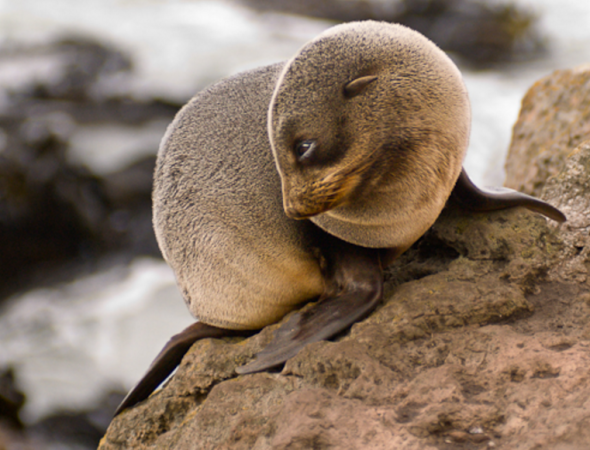
Image: New Zealand Sea Lion Pup. Credits: NZ Fur Seals.
Back in 2012 populations of New Zealand sea lions “were estimated to be standing at a population count of 12,000 mature individuals”. However since that count took place, from (2014) populations have ‘allegedly plummeted’ to all new levels although there doesn’t appear to be any evidence as to why the species suddenly declined - fish trawling and disease have been noted though!.
Like the Maui’s dolphin, the sea lion has come under intense scrutiny this year after research showed its numbers had halved since 1998. It has been classed as nationally critical and if its decline is not stemmed will be extinct within 23 years. A bacterial infection severely reduced breeding in 1997-98, and the species has failed to recover.
Its decline has been compounded by deaths due to squid fisheries, which trawl at a similar depth to the sea lions’ hunting grounds. Conservation groups call the population decline “a national emergency and are calling on stricter by-catch limits and a change in fishing methods”.
BACK IN 2012 THE NEW ZEALAND HERALD REPORTED THE FOLLOWING
In a country with 2800 threatened species, conservation in New Zealand is often about picking winners. The Department of Conservation’s budget and energy can extend only to active interventions for 200 of these endangered species.
Whether a species is protected depends on funding, community input, national identity and research. DoC spokesman Rory Newsam says interventions are often made because the department believes it can “get the most bang for its buck”. But animals and plants are not always invested in because they have a greater chance of survival.
The kakapo receives a relatively large chunk of funding despite being functionally extinct on the mainland. Some ecologists argue too much is spent rescuing the rare parrot, while more crucial parts of our ecosystem are left behind. But the kakapo is protected because it is a charismatic species and the public considers it integral to New Zealand’s ecological identity.
Conservationists say kakapo are a window to New Zealand’s history. They are believed to have inhabited the Earth for millions of years. To kill them off in a fraction of that time is an indictment on the way we live.

Image: New Zealand Sea Lion. Image Credits One Newz.
New Zealand sea lions are known to predate on a wide range of prey species including fish (e.g. hoki and red cod), cephalopods (e.g. New Zealand arrow squid and yellow octopus), crustaceans, seabirds and other marine mammals. Studies indicate a strong location effect on diet, with almost no overlap in prey species comparing sea lions at Otago Peninsula and Campbell Island, at the north and south extents of the species’ breeding range. New Zealand sea lions are in turn predated on by great white sharks, with 27% showing evidence of scarring from near-miss shark attacks in an opportunistic study of adult NZ sea lions at Sandy Bay, Enderby Island.
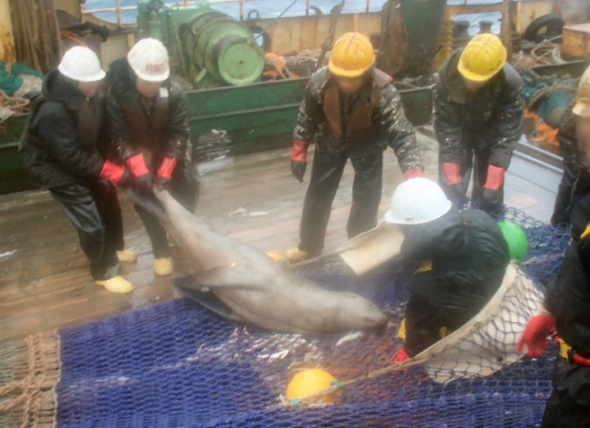
Image: Dead New Zealand Sea Lion in Fishing Net.
Since 2012 New Zealand conservationists, and the public community have been calling on the New Zealand government to do everything they possibly can to preserve this species. Unfortunately as you can see above fishermen are still accidentally killing the species off. As the species is protected under law and listed as endangered, the New Zealand government must take action against these perpetrators, otherwise extinction will most certainly occur.
The Maori people of New Zealand have traditionally hunted Sea Lions, presumably since first contact, as did Europeans upon their arrival much later. Commercial sealing in the early 19th century decimated the population in the Auckland Islands, but despite the depletion sealing continued until the mid-20th century when it was halted.
Commercial sealing in the early 19th century decimated the New Zealand Sea Lion population in the Auckland Islands, but despite the depletion sealing continued until the mid-20th century. The population has yet to fully recover from the period of over exploitation. At the present time, New Zealand Sea Lions have a highly restricted distribution, a small population, and nearly all of the breeding activity is concentrated in two subantarctic island groups. This restricted and small breeding population in combination makes them vulnerable to disease outbreaks, environmental change, and human activities.
The commercial Arrow Squid trawl fishery near the Auckland Islands reported their first New Zealand Sea Lion bycatch mortalities in 1978. Reported or estimated mortality between 1995 and 2007 averaged 92 animals annually (range 17-143) which was 3.7% of the estimated number of mature individuals in the Auckland Island area. Of particular concern is that most bycatch animals are females (up to 91%). New Zealand Sea Lions are also incidentally caught in other trawl fisheries around the Auckland and Campbell Islands.
Apart from direct mortality, competition and habitat modification caused by fishing activity may also be impacting New Zealand Sea Lion foraging areas. Epizootic outbreaks at the Auckland Islands in 1998, 2002, and 2003 led to more than 50%, 33%, and 21% early pup mortality respectively, and were also responsible for the deaths of some animals from other age classes during 1998.
The source of the suspected bacterial agent and cause of the outbreak and subsequent mortality for the 1998 outbreak are unknown, however the 2002 and 2003 outbreaks have been identified as being caused by Klebsiella pneumoniae.
The future of the New Zealand sea lion doesn’t look good at all. I highly suspect that we’re going to lose the species within 10-20 years (if that). More needs to be done to preserve the species habitat and its current fishing grounds as well as protecting from bacterial outbreaks. Failing this the species will be extinct within 10-20 years max. I am highly doubtful here, which is very rare for me to speak about.
Thank you for reading.
Dr Jose C. Depre. PhD. MEnvSc. BSc(Hons) Botany, PhD(NeuroSci) D.V.M.
Environmental, Botanical & Human Scientist.
Endangered Species Friday: Diomedea amsterdamensis - An Ocean of Grief.
Endangered Species Friday: Diomedea amsterdamensis
This Friday’s (ESP) Endangered Species watch Post I dedicate to one of the most stunning and adorable of all plane like birds. Listed as [critically endangered] and identified back in 1983 by South African Dr Jean Paul Roux whom is a Marine Biologist studying Zoology, Systems Biology and Marine Biology at the University of Cape Town, South Africa Jean Paul Roux works full-time at the Department of Biological Sciences, Cape Town. (Image D. amsterdamensis fledglings)
Commonly identified as the Amsterdam Albatross or Amsterdam Island Albatross the species was listed as [critically endangered] back in 2012. This gorgeous bird is endemic to the French Southern Territories of which its populations are continuing to decline at a rapid pace. Populations were estimated at a mere 170 individuals which in turn ranks as the worlds most endangered species of bird. Out of the 170 individuals there are a total of 80 mature individuals consisting of 26 pairs that breed annually.
Between 2001-2007 there were a total of 24-31 breeding pairs annually, which leaves a slightly lower population count today of around 100 mature individuals. Back in 1998 scientists stated that there were no fewer than 50 mature individuals if that. The Amsterdam Albatross doesn’t naturally have a small population however qualified for the category of [critically endangered] due to this reason when identified in 1983. Furthermore pollution, habitat destruction and disease remain pivotal factors that’s decreasing populations furthermore. The video below from MidWay island explains a little more about pollution and birds of this caliber.
Its quite possible that there could be more unidentified groups within the local territory or elsewhere, unfortunately as yet there is no evidence to suggest the Amsterdam Albatross is located anywhere else, however there have been sightings, which do not necessarily count as the species being endemic to countries the bird may have been noted within.
The species breeds on the Plateau des Tourbières on Amsterdam Island (French Southern Territories) in the southern Indian Ocean. An increase of populations was documented via census back in 1984, a year after identification. Marine Biologists have stated that population sizes may have been more larger when its range was more extensive over the slopes of the island.
Meanwhile in South Africa satellite tracking data has indicated the Amsterdam Albatross ranges off the coast of Eastern South Africa to the South of Western Australia in non-breeding pairs. There have been some [possible] sightings over Australia through to New Zealand too. Meanwhile South Africa “may” have its first breeding pair this must not be taken as factual though. Back in 2013 a nature photographer photographed an Amsterdam Albatross off the Western Cape of South Africa which is the very first documented and confirmed sighting [2013].
AN OCEAN OF GRIEF
Breeding is biennial (when successful) and is restricted to the central plateau of the island at 500-600 m, where only one breeding group is known. Pair-bonds are lifelong, and breeding begins in February. Most eggs are laid from late February to March, and chicks fledge in January to February the following year.
Immature birds begin to return to breeding colonies between four and seven years after fledging but do not begin to breed until they are nine years of age. The Amsterdam Albatross exact diet is unknown, but probably consists of fish, squid and crustaceans. During the breeding season, birds forage both around Amsterdam Island and up to 2,200 km away in subtropical waters which is something of interest. During the great Sardine Run many aquatic species consisting of birds, seals, sharks and whales hit the South African oceans hard for sardines. So I am calling on my fellow South African friends to please be on the lookout for this rather elusive bird.
Read more here on the Avian Biology.
Image: Amsterdam Albatross mating ritual, credited to Andrew Rouse.
Diomedea amsterdamensis, is quite a large albatross. When described in 1983, the species was thought by some researchers to be a sub-species of the wandering albatross, D. exulans. Bird Life International and the IOC recognize it as a species, James Clements does not, and the SACC has a proposal on the table to split the species. Please refer to the link above on Avian Biology which will explain more on the bird and its current classification.
More recently, mitchondrial DNA comparisons between the Amsterdam albatross, the wandering albatross Diomedea exulans, the Antipodean albatross D. antipodensis and the Tristan albatross D. dabbenena, provide clear genetic evidence that the Amsterdam albatross is a separate species.
Threats
Degradation of breeding sites by introduced cattle has decreased the species’s range and population across the island. Human disturbance is presumably also to blame. Introduced predators are a major threat, particularly feral cats. Interactions with longline fisheries around the island in the 1970s and early 1980s could also have contributed to a decline in the population.
Today the population is threatened primarily by the potential spread of diseases (avian cholera and Erysipelothrix rhusiopathiae) that affect the Indian Yellow-nosed Albatross Thalassarche carteri population 3 km from the colony. Infection risks are very high and increased chick mortality over recent years suggests the population is already affected.
The foraging range of the species overlaps with longline fishing operations targeting tropical tuna species, so bycatch may also still be a threat, and a recent analysis has suggested that bycatch levels exceeding six individuals per year would be enough to cause a potentially irreversible population decline. Having a distribution on relatively low-lying islands, this species is potentially susceptible to climate change through sea-level rise and shifts in suitable climatic conditions. Plastic pollution has also been noted as problematic.
International Animal Rescue Foundation Africa and International Animal Rescue Foundation France are currently working on projects to reduce more plastic within bird habitat that has never been visited by the organisation before. The current plight of bird habitat and plastic pollution within the Pacific ocean needs to be worked on by everyone, furthermore addressed immediately.
To date all twenty two species within the four genera of Albatross are heavily threatened with extinction. There remains no species at present that is listed as [least concern]. The future is indeed very bleak for all 22 species and something we now need to work on and towards to preserve Albatross’s before extinction occurs within a decade for the vast majority of all twenty two species and sub-species.
Thank you for reading.
Please share to make aware the plight of this stunning bird and the remaining twenty two species too.
Dr Jose C. Depre.
Botanical and Environmental Scientist.
A planet without birds is a world not worth living within anymore. Daily I am traumatized and deeply disturbed at viewing the destruction we have caused to these stunning animals and, their natural habitat. I am pained, deeply frustrated and infuriated at international retail companies whom preach good yet practice negligence killing off via plastic pollution our species of birds. Jose Depre
Revelation 16:16 Har-Ma ged’on or Human Fault?
Revelation 16:16 Har-Ma ged’on or Human Fault?
Since 2000 International Animal Rescue Foundation has been following, reporting and researching mass animal deaths around the globe and (some) freak unexplained deaths that have left scientists baffled. Furthermore the increasing avian bird flu pandemic that is threatening many birds and dogs looks set to be the largest outbreak in history.
Some of the worst cases we and the I.A.R.F have viewed are unexplained whale, seal and dolphin beaching’s all of which have been occurring along coastlines and within local fresh water rivers. Pollution has been the main number one factor blamed for many land and marine deaths. However other deaths have left ourselves and scientists puzzled as to why many animals have been found dead in large piles, what has led to such large numbers of animals dying off and how can such large die offs be prevented?
The vast majority of animal deaths seem to be occurring within Asia and the United States. Research has shown that there is no real limited location in either the United States or Asia. 8th June 2015 in Florida hundreds of dead fish washed up onto the local shoreline. A few days prior to this a large fish kill in a lake in Mattoon, Illinois was witnessed. Meanwhile in Lake Aldama, Mexico 3rd June 2015 tons of fish were located dead floating on the surface in what has been stated as “unexplained mass deaths”.
Image: 2 waterways that will host 2016 Olympic events in Brazil are filled with dead fish and trash 16 months before the games.
Within the past twenty eight days hundreds of dead fish appeared in the waters of Michoacan, Mexico. Hundreds of dead fish were found washed up along Big Bear Lake in California, America. Meanwhile thousands of dead fish were found washed ashore on a river in Rhode Island. 30th May 2015 tens of thousands of dead fish were found washed up along Flanders bay, New York.
Environmental teams from International Animal Rescue Foundation Scotland, England and France have also reported and viewed with dismay mass die offs and stranding’s off the British, Scottish and French coastlines too. 2nd June 2015 - 21 pilot whales were located stranded, ten of which were reported dead in Skye, Scotland. Within Rennes, France a large die off, of fish was witnessed in the River close to Rennes. 27th may 2015 hundreds of fish were located in the River Darlinton, Great Britain. On the 23rd April “thousands” of dead star fish were located off the coast in Cumbria, Great Britain and, on the 17th April 2015 “scores” of dead “dolphins and whales” were found washed up on the along the coast of France in what scientists state as “strange” and “unexplained”.
Image: Ireland, Lissadell Beach, Co Sligo, strewn with dead starfish.
There are many explanations as to why so many marine and fresh water animals have been found dead most of which are put down to chronic pollution, whales and dolphins colliding with marine vessels, changes in ocean temperatures, earthquakes down to environmental changes and, sonar operations by naval forces. Some marine experts and Animal Activists have blamed military operations within the seas and close to land. Conspiracy theorists are blaming secretive governmental organisations and operations while religious individuals are stating the time is coming 16:16 Har-Ma ged’on. Environmental scientists have found neither evidence of mass animal deaths caused by covert government operations or Har-Ma ged’on nearing.
Conspiracy theorists and religious individuals need to put their suspicions and beliefs to one-side and concentrate on the more realistic issue which is that of human blame. Meanwhile, while there is evidence to prove that human activity and negligence is to blame it must be noted too the “unexplained events” that still cannot be answered are a cause for concern and need more in-depth investigations.
Image: Pilot whales stranded off the coast of Scotland, Skye. Nine died.
Below I have included three major culprits that International Animal Rescue Foundation’s Marine Department have been investigating since 2000. While these three culprits remain major players one must not forget aggressors such as climate change of which reveals little evidence on mass marine deaths and deliberate or accidental damage such as oil spillage or vessel waste dumping out at sea. Below and for your information is collated research in word format and video evidence too. If you’d like to discuss this matter further please do not hesitate in contacting myself or anyone of my team here at: [email protected]
Red Tide: Algae Bloom/ Red Tide.
Image: Red tide (HAB) Harmful Agal Bloom of the coast, Sydney Australia.
An algal bloom is a rapid increase or accumulation in the population of algae (typically microscopic) in a water system. Cyanobacteria blooms are often called blue-green algae. Algal blooms may occur in freshwater as well as marine environments. International Animal Rescue Foundation’s Marine Department has located much evidence of such algal blooms responsible for mass fish and whale deaths.
Of particular note are harmful algal blooms (HABs), which are algal bloom events involving toxic or otherwise harmful phytoplankton such as dinoflagellates of the genus Alexandrium and Karenia, or diatoms of the genus Pseudo-nitzschia. Such blooms often take on a red or brown hue and are known colloquially as red tides.
During the 13th May 2015 reports of many hundreds of Diamondback Terrapins were reported within Flanders Bay. Marine scientists have stated that saxitoxin is to blame for the mass animal deaths however the jury is still out on this issue. I must also note that Flanders Bay has in the past six months been the main focus of attention for marine biologists as hundreds and hundreds of dead marine life has been found washing up within the area with no real explanation.
Saxitoxin (STX) is the best-known paralytic shellfish toxin (PST). Ingestion of saxitoxin (usually through shellfish contaminated by toxic algal blooms) is responsible for the human illness known as paralytic shellfish poisoning (PSP).
The term saxitoxin originates from the species name of the butter clam (Saxidomus giganteus) in which it was first recognized. But, the term saxitoxin can also refer to the entire suite of related neurotoxins (known collectively as “saxitoxins”) produced by these microorganisms, which include pure saxitoxin (STX), neosaxitoxin (NSTX), gonyautoxins (GTX) and decarbamoylsaxitoxin (dcSTX).
Saxitoxin has a large environmental and economic impact, as its detection in shellfish such as mussels, clams and scallops frequently leads to closures of commercial and recreational shellfish harvesting, especially in California, Oregon, Washington, and New England. On researching current marine deaths in the California state of America I must note that Saxitoxin and human induced environmental change has been noted as causing the deaths of many seals and fish. The local seal deaths must not be confused with pollution or Saxitoxin but more increasing water temperature that is forcing fish further away from the shoreline. Due to mother seals having to fish further afield their cubs are being left for longer periods thus starving practically to death.
International Animal Rescue Foundation found quite alarming evidence of Saxitoxin an incredibly potent and toxic chemical known to be used within the armed forces as a “suicide pill” freely on sale via a quick and easy Google search. The Ead department furthermore located members of the public asking where they could obtain such a harmful chemical of which should only be handled by (experienced chemical professionals).
Back in August 2003 Saxitoxin was to blame for the deaths of many humback whales. The deadly alga was the leading suspect in the mass death of humpback whales around 150 miles off Cape Cod, say marine experts.
Carcass sightings suggest that at least 12 whales, mostly humpbacks, have died in the Georges Bank area, making it one of the worst known mass fatalities. “It’s really quite disturbing,” says whale biologist Phillip Clapham of the Northeast Fisheries Science Center in Woods Hole, Massachusetts.
A red tide of the toxic algae Alexandrium fundyense is the most likely culprit. The algae’s poison, saxitoxin, killed 14 whales in the same area in 1987. Saxitoxin can accumulate in mackerel which whales eat. Scientists did also point to a very slim chance of acoustic operations conducted at sea by the Navy.
International Animal Rescue Foundation has found Saxitoxin to be the main culprit thus far related to fish, whale, seal and other marine deaths. Saxitoxin has been blamed for the recent unexplained deaths of thousands of lobsters within California this past month too.
Could it also be a sheer coincidence that all deaths seen within Asia, United States and South America are somehow related to “Saxitoxin” and not religious events, the rebirth of Jesus Christ or covert military operations?
STX is a neurotoxin naturally produced by certain species of marine dinoflagellates (Alexandrium sp., Gymnodinium sp., Pyrodinium sp.) and cyanobacteria (Anabaena sp., some Aphanizomenon spp., Cylindrospermopsis sp., Lyngbya sp., Planktothrix sp.)
STX has been found in at least 12 marine puffer fish species in Asia and one freshwater fish tilapia in Brazil. However, the ultimate source of STX is often still uncertain. In the United States, paralytic shellfish poisoning is limited to New England and the West Coast. The dinoflagellate Pyrodinium bahamense is the source of STX found in Florida.
Recent research shows the detection of STX in the skin, muscle, viscera, and gonads of “Indian River Lagoon” southern puffer fish, with the highest concentration (22,104 μg STX eq/100 g tissue) measured in the ovaries. Even after a year of captivity, the skin mucus remained highly toxic. The various concentrations in puffer fish from the United States are similar to those found in the Philippines, Thailand, Japan, and South American countries. Coincidentally all of these countries have the “largest” amount of fish and whale die offs. However I must note that my mere speculation must not be taken for an answer.
Pollution: Human Negligence.
Image: Shocking - stomach contents of a dead Albatross.
I’m a great lover of birds and viewing this image has distressed myself countless times. Daily I ask why do we as humans treat our planet like a dumping ground of which animals suffer dearly.
While Mother Nature is naturally attacking herself we must not forget that human negligence is overall the biggest culprit known to be causing countless marine and fresh water animal deaths. Pollution increases as human population does and a colossal lump of everyday natural and man-made human waste sadly does end up within fresh and marine waters.
10th January 2015 the Environment Agency in Leicestershire, United Kingdom blamed human pollution for causing the deaths of “thousands of fresh water fish”. Farm slurry was the main culprit here of which the Environmental Agency concluded within their report as the main culprit.
Waterway manager for the trust, Neil Owen, said: “It’s really sad that we’ve had so many fish die from the careless actions of an individual which allowed slurry to enter our waterway. The end count was said to be “60,000” fish dead due to one ignorant and unprofessional action of a single farmer.
Meanwhile this past April tons of dead fish have been removed from a Rio de Janeiro lagoon where Olympic events are to be held in 2016, sparking debate among officials and scientists over what caused the mass die-off, as well as fears that the water may be unsafe for athletes.
The die-offs are becoming a common occurrence in Rio, where rivers, lakes and even the ocean are blighted by raw sewage and garbage. Officials have argued over the cause, with Rio’s environmental secretariat insisting last week that the incident is the result of the sudden change in water temperature.
“The intense rains that happened last week and a rise in the sea levels led to a spike in the [sea] water entering the lake, causing a thermal shock,” the secretariat said in a statement, adding that the water temperature had fallen by 7.2 degrees Fahrenheit in a short period of time. Many scientists disagreed with that explanation, pointing to pollution instead.
January 12th 1988 pollution was blamed for the deaths of countless scores of beluga whales. Autopsies of dead belugas washed onto the banks of the river have found very high levels of more than 30 hazardous chemical pollutants, including DDT, polychlorinated biphenyls or PCB’s, the pesticide Mirex, metals such as mercury and cadmium, and polycyclic aromatic hydrocarbons similar to those found in cigarettes and regarded as cancer-causing agents.
The diseases found in the 72 dead whales examined so far include bronchial pneumonia, hepatitis, perforated gastric ulcers, pulmonary abscesses and even a case of bladder cancer. A majority of the whales appear to have died from septicemia, or blood poisoning, which killed them because their immune systems failed.
While the above report dates back to the last century one would be led to believe that governing bodies would have at least (cleaned their act up). Unfortunately that is not the case. In August of 2014, biologists from the Virginia Aquarium and Marine Science Center Standing Response Team were notified of a particularly unusual sighting regarding a long young female sei whale. She was spotted swimming up the river, which is particularly unusual as these creatures are typically found in the deep waters of the Atlantic.
A necropsy revealed that the whale had swallowed a shard of rigid, black plastic that had lacerated its stomach and prevented it from eating. They found that she had also been struck by a ship. The shard of black plastic was later found to be a discarded DVD case.
To date International Animal Rescue Foundation has uncovered much evidence of marine pollution responsible for the deaths of small and larger fish down to entire shoals of fish and pods of dolphins. Plastic, carrier bags, oil and chemical pollution all reign in at number one and not the Coming of the new Jesus Christ or even a (not so) secret government operation aimed at killing humans and our precious wildlife. Think about it for a brief minute. Why would the United States (E.g) wish to kill hundreds of thousands of fish off when fish is a staple diet and major import and export monetary gain?
Naval Marine Operations: Acoustics.
Image: Whale death caused by naval sonar operations.
Despite natural events and pollution being the major two factors here there still remains yet another problem within our oceans that is angering Animal Activists, Marine Biologists and other experts. Acoustic activities, drilling and military marine operations reign in at number three.
Despite many reports and scholarship articles by leading scientists and marine agencies sounding the alarm acoustic disturbance has been noted and reported to be killing, injuring or seriously impacting on the physical health of whales, fish and crustaceans for some years. Sonars used by international military navy vessels from around the world are giving scientists somewhat of a headache - and - stopping such operations within the deep seas is also another problem especially when sonars are required in all but most of the naval vessels.
Back in 1963 of the Gulf of Genoa, Italy Naval Sonar (NS) operations led to the stranding of 15 Cuvier’s beaked whales (cause - naval maneuvers). Back in 1998 in the Canary islands +12 Cuvier’s beaked whales stranded with a further Gervais’ beaked whale stranding too (cause - FLOTA 88 naval exercise). Back in 2003 the following - Cuvier’s beaked whale (9), Blainville’s beaked whale (3), beaked whale spp (2), Minke whale (2), Atlantic spotted dolphin (1) all stranded, (cause - Naval MFA operation).
One of the very worst cases researched on was seen in Marion Bay, Tasmania where some 145 Long finned Pilot Whales stranded themselves, (cause - “suspected” use of sonar by two naval mine sweepers). Back in 2008 some 26 dolphins stranded themselves off the coast of Cornwall, Great Britain, (cause - Naval exercise but no ship sonar in use except HF hydrographic sonar on HMS Enterprise).
Three of the most commonly seen culprits have been included within this article for your information. Unfortunately while we are aware of these culprits more and more whales, fish and smaller sea creatures are washing up dead around the planet. While some cases cannot be answered due to unknown and non-investigated causes the vast majority of mass animal deaths eventually do indicate - humans as the major player while, natural events such as blooms come second and pollution ranking in at first (Still no evidence of a re-birth of Jesus Christ or the world ending though). Our seas like our lands and airways are becoming more and more congested and with each increase of human activity seen, more and more deaths of both land and marine animals will come.
International Animal Rescue Foundation has located no hard hitting evidence that proves the world is nearing an end, a re-birth of Jesus, Armageddon style apocalypse or (not so) secret military operations responsible for the deaths of many marine, fresh water and land animals.. However while the organisation can rule out a new Jesus re-birth and events written into religious scripture there does remain some suspicion surrounding the High Frequency Active Auroral Research Program or, commonly known as - (HAARP). However any such investigative studies on the (HAARP) program have been quashed as the program will be shutting down after informing Congress last year (2014) that funds needed to be used elsewhere on other weather modification programs. In reality the program is just entering a new phase
Concluding:
We are Mother Natures worst enemy and not any entity within a religious or conspiracy theorists scripture. Humans are polluting the atmosphere, littering the oceans and land, destroying natural habitat, over-populating, displacing animals, killing marine animals through the use of naval exercises and on, and on, and on.
Some people need to look beyond the computer, the conspiracy field of nonsense, religious dates and begin laying the blame at their own two feet. Failing this many more marine creatures and animals will subsequently perish.
Thank you for reading.
Dr Jose C. Depre.


